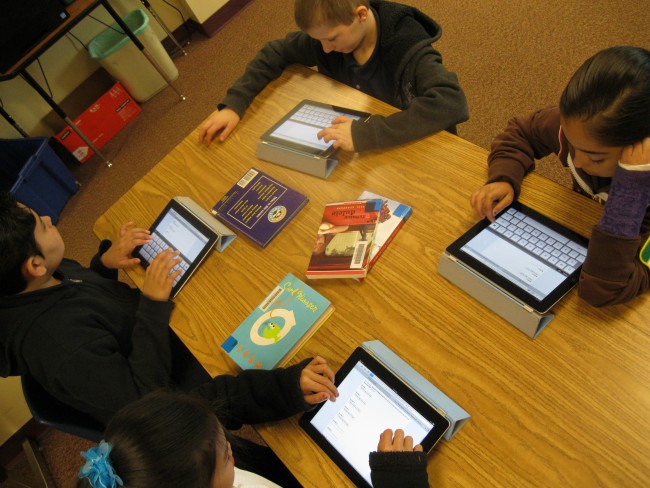Below is a guest blog by Dr. Eric Wearne of Georgia Gwinnett College and formerly with the Governor’s Office of Student Achievement. Dr. Wearne currently leads GCO’s College & Career Pathways working group.
**********************************
In its 2013 Report Card, Digital Learning Now, a project of the Foundation for Excellence in Education, argued:
State policy can remove barriers to innovative approaches or it can stifle them with restrictions, red tape, and reinforcement of traditional, unsustainable approaches. It can accelerate reform or it can further entrench the status quo. Without changing state policy, innovative tools and models will fail to scale.
According to the Report Card, however, the news is good:
“states are rising to the challenge of supporting next generation models of learning. In 2013, states debated more than 450 digital learning bills with 132 signed into law. This builds on a record year in 2012 when state lawmakers introduced nearly 700 bills and signed 152 into law.”
To explore these issues specifically, Georgia Center for Opportunity’s College and Career Readiness Working Group heard from Sam Rauschenberg, Deputy Director of the Governor’s Office of Student Achievement, who facilitated the Task Force, and Carla Youmans, Instructional Technology Specialist at South Forsyth High School in Forsyth County, who is coordinating a new hybrid program at that school.
The Governor’s Digital Task Force
In 2012, Governor Deal created a task force to look into online learning in Georgia. The Governor’s Digital Learning Task Force met over the course of 2012-13, and provided recommendations to Governor Deal in December of last year. The Task Force’s recommendations fall into three categories:
- Infrastructure
- Digital Content and Courses
- Blended and Competency-Based Learning
The state has already started to implement some of the Task Force’s recommendations on infrastructure. For example, the FY15 budget includes $3.9 million to connect school systems to the University System’s PeachNet. The AFY14 and FY15 budgets also include $14 million in bond funds to the Georgia Department of Education for district and school grants for equipment required to receive and use added bandwidth (edge devices, LAN, wireless, etc.), and $25 million in general funds to the One Georgia Authority for grants to support extension of high-speed internet access in schools.
Still, opportunities exist in the areas of digital content and courses, and experimenting with new models for blended and competency-based learning. For example the state, via the Georgia Department of Education, currently provides teachers with access to lesson and video content online. However, to maximize teachers’ use of the materials and the potentially transformative power of online learning, much more can be done. The working group discussed the concept of course choice, as has been adopted in Louisiana, and the idea of opening online schools developed in one school system to students from any other school system. Conceptually, the competition should make for improved products and services, all for the purpose of better serving Georgia children. The Governor’s Task Force report alludes to barriers that could make online learning easier and higher-quality. Enabling competition and other market-based approaches would help do that.
South Forsyth High School Hybrid
One school in Georgia that is experimenting within current structures is South Forsyth High School. South Forsyth is preparing to offer a hybrid schedule to a select group of students next year. Mondays are “synchronous”: students will sign on to their class websites when school starts, teachers will teach them online for a portion of the class period, and then students will work independently at home for the rest of the period. Then students will check in again when their next class starts. Tuesdays, Wednesdays, and Thursdays, students come to campus and attend class as all other SFHS students do. Fridays are “asynchronous”: students receive their assignments online, but are free to complete them at their own speed. If a students’ grade drops below a certain level, however, that student is obligated to come in and meet individually (or in very small groups) with the teacher. The implications of this kind of system are many: struggling students can be identified and also given individual help more easily, and within the normal time constraints of a school week; students receive the kind of practice in self-regulation they will need in college; etc.
South Forsyth’s arrangement may not work for every school or every student, and digital learning overall is still in its infancy – we simply don’t yet know the best methods or all the possibilities involved with online learning. But as one task force member argued, we don’t necessarily need one 100 percent solution to improve student achievement and to increase opportunities; we could be successful with 100 one percent solutions. The Governor’s Task Force and South Forsyth High School’s hybrid program play important parts in state and local experimentation that can lead to better outcomes for Georgia students.
